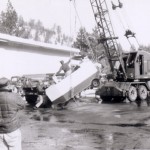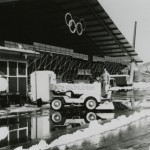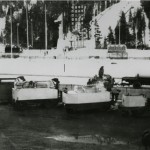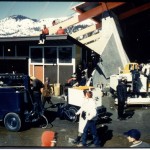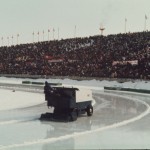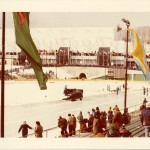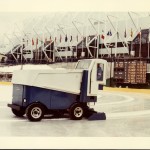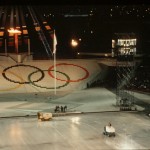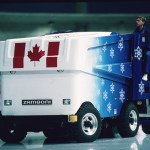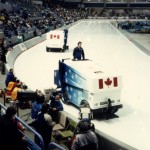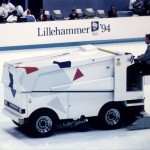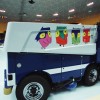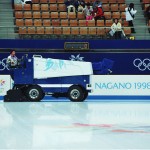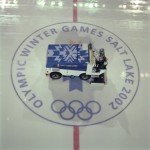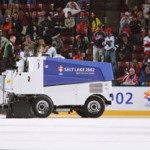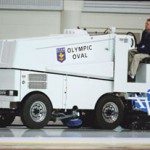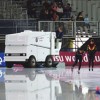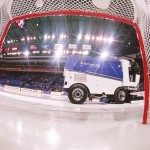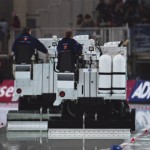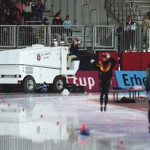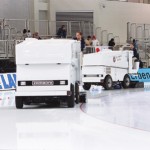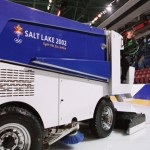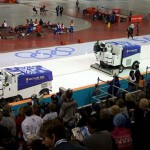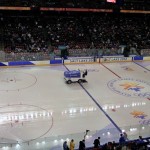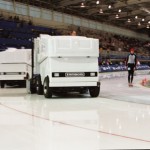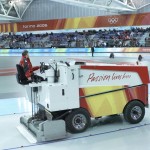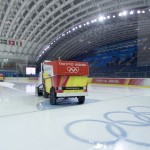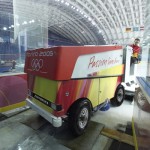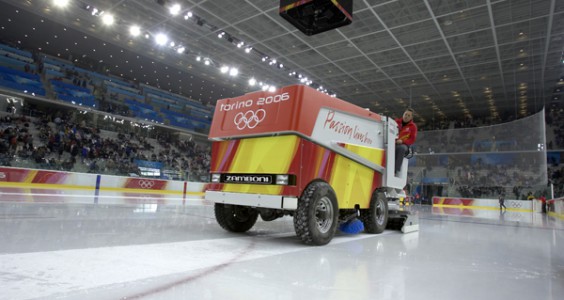
The Zamboni Company has participated in many historic events, but one of the most prestigious continues to be the Winter Olympic Games. The Zamboni® ice resurfacing machine made its Olympic debut at the Winter Olympic Games in Squaw Valley, California in 1960. The Squaw Valley Games were the first to use a mechanical ice resurfacer, with six Zamboni machines maintaining the ice sheets. It was also the first time that the Olympic Games included an artificially refrigerated 400 meter speed skating oval.
As the Games approached, Frank Zamboni was working on his latest innovation: an electric version of the ice resurfacing machines, which until that time had been powered with gasoline or propane. As the Games began, the very first electric Zamboni ice resurfacing machine moved out on to the Olympic ice surface at the Blythe Arena and history was made.
Since that time, the machines have had a presence at nearly every Olympic ice event.
The 2006 Winter Olympic Games, which were held in Torino, Italy, were a “homecoming” of sorts for the Zamboni Company. Frank Zamboni’s mother was born in a village just west of Torino, located in northwestern Italy. Each of the ice arenas in Torino used Zamboni exclusively for their ice resurfacing needs. The “fleet” of Zamboni machines was comprised entirely of the electric powered Model 552.
The Zamboni Company was the on the ice exclusively in Nagano (1998) and Lillehammer (1994) with battery powered machines and provided alternative fuel powered machines for the Winter Olympic Games in Salt Lake in 2002.
Zamboni Olympic “Fun Facts”
- The Zamboni ice resurfacing machine made its Olympic debut during the 1960 Olympic Winter Games in Squaw Valley, CA, As the Squaw Valley Olympics experienced worldwide television exposure, the Zamboni machine received international attention.
- Frank Zamboni brought a total of six Zamboni ice resurfacers to the Squaw Valley Winter Games, including three new machine models. The premiere of two (the first of their kind) electric machines: one 3-wheeled machine (to make tight turns on the Olympic ice sheets) and another as the primary machine for the Blythe Arena. A special resurfacer for the first-ever 400 meter refrigerated speed track was also introduced.
- In 2001, a Zamboni machine was driven from the East Coast of Canada (St. John’s) across to the West Coast (Victoria, B.C.) to raise money for Canadian Hockey and to support their 2002 Olympic presence. At about nine miles per hour, the journey took approximately four months.
- Twenty Zamboni machines were on hand to resurface the various ice sheets during the 2002 Salt Lake Winter Games.
- Seventeen Zamboni ice resurfacers maintained the ice in Torino, Italy for the 2006 Olympic Winter Games, many of them the Model 552 electric powered machine.
- Prior to the invention of the Zamboni machine, the manual resurfacing of the ice sheet required three or four workers and took over one hour to complete.
- In addition to providing a smooth sheet of ice, the ice technicians work to maintain the ice to the preference of each sport’s athletes. Hockey players seem to prefer “harder” ice and figure skaters prefer their ice a bit “softer”, so that they can use their skate blades and toe picks to their advantage.
